India customers to view on amazon.in
“Please note that no animals were harmed in the making of this content.”
Camping with Dogs: What You Need to Know
Camping with your furry friend can be a wonderful experience, creating lifelong memories. However, it requires careful planning and preparation to ensure a safe and enjoyable trip for both you and your pet.
- The Joy of Camping with Your Canine Companion
- Benefits of Taking Your Dog Camping
- Understanding Your Dog’s Camping Personality
- Setting Realistic Expectations
- Assessing if Your Dog is Ready for Camping
- Essential Gear for Camping with Dogs
- Finding Pet-Friendly Campgrounds in the US
- National Parks That Welcome Dogs
- Private Campgrounds with Dog Amenities
- Understanding Campground Pet Policies
- Camping with Dogs: What You Need to Know About Preparation
- Pre-Trip Veterinary Checkups
- Updating Identification and Microchips
- Packing a Pet First-Aid Kit
- Acclimating Your Dog to Camping Equipment
- Setting Up a Dog-Friendly Campsite
- Creating Safe Boundaries
- Shelter Considerations for Your Dog
- Managing Waste Responsibly
- Keeping Food Secure from Wildlife
- Managing Dog Behavior in the Wilderness
- Preventing Excessive Barking
- Handling Encounters with Other Campers
- Nighttime Routines and Sleeping Arrangements
- Dealing with Anxiety in Unfamiliar Environments
- Trail Safety and Emergency Preparedness
- Seasonal Considerations for Dog Camping
- Conclusion: Creating Lasting Memories with Your Four-Legged Camping Buddy
- FAQ
- What are the essential items to pack when camping with dogs?
- How do I assess if my dog is ready for camping?
- What are some pet-friendly campgrounds in the US?
- How can I keep my dog safe while camping?
- What should I do in case of an emergency while camping with my dog?
- How can I prevent excessive barking while camping?
- What are some seasonal considerations for dog camping?
- Can I camp with my cat?
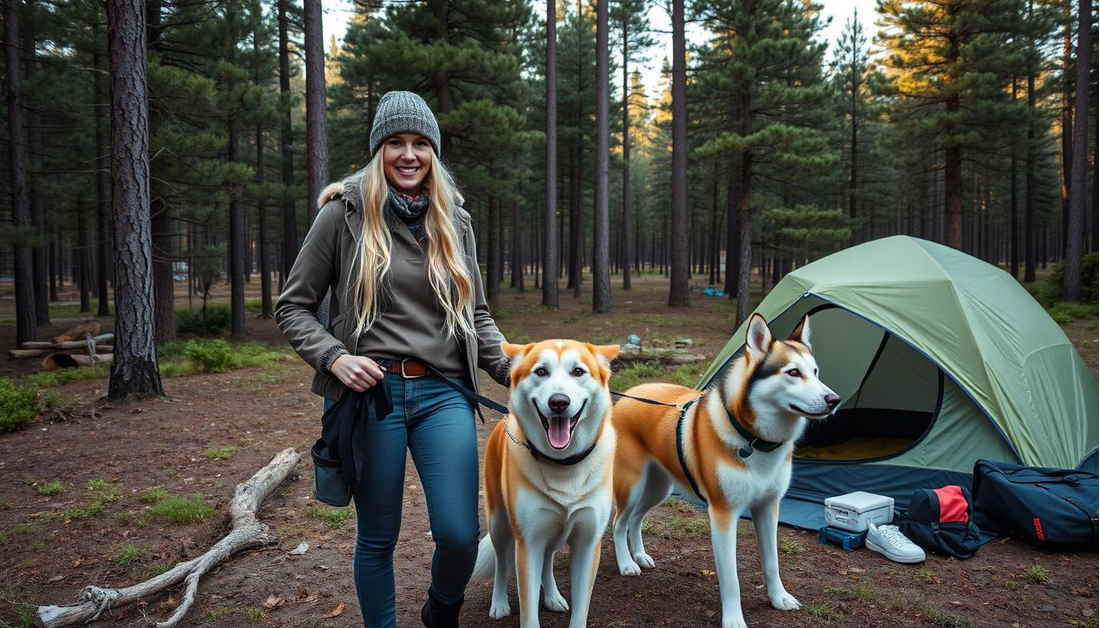
Before heading out on your outdoor adventure, it’s essential to assess if your dog is ready for camping. This includes considering their temperament, health, and training level. By taking these factors into account, you can set up a dog-friendly campsite that will make your trip enjoyable for everyone.
Key Takeaways
- Assess your dog’s readiness for camping
- Plan a dog-friendly campsite
- Pack essential gear for your pet
- Keep your dog safe during outdoor adventures
- Enjoy quality time with your furry friend
The Joy of Camping with Your Canine Companion
There’s something special about camping with your canine companion, as it allows you to share in the joys of the great outdoors together. Camping with your dog can be a truly enriching experience, fostering a deeper connection between you and your pet.
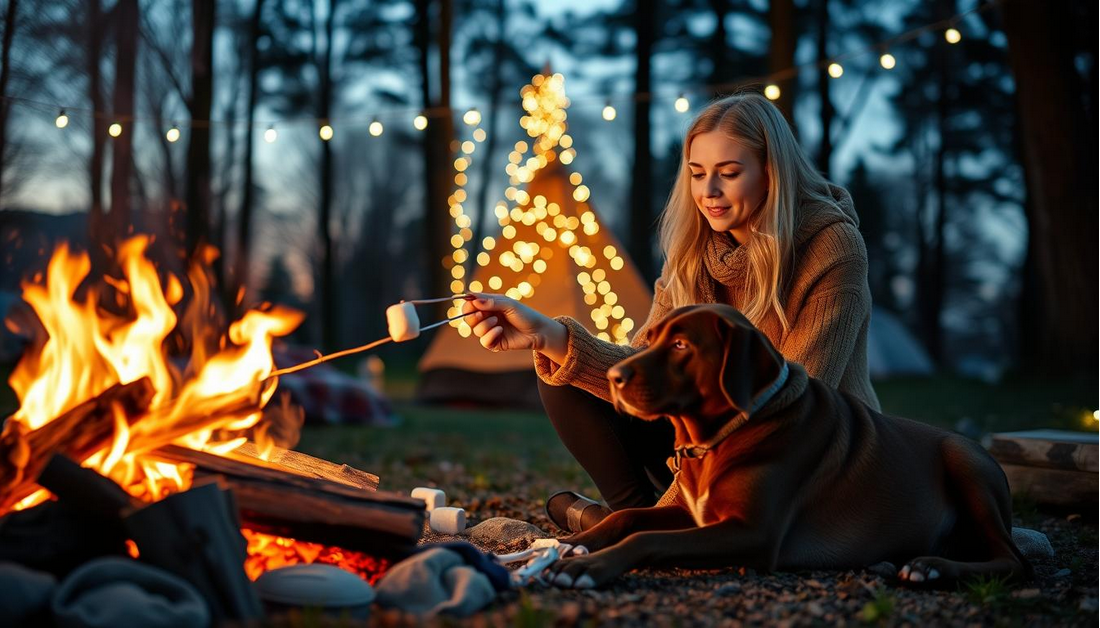
Benefits of Taking Your Dog Camping
Camping with your dog offers numerous benefits, including strengthened bonding and the opportunity for your pet to experience new environments. It’s essential to recognize that camping can be a great way to provide your dog with exercise and mental stimulation. By including your dog in outdoor activities, you can enhance their overall well-being and create lasting memories.
Understanding Your Dog’s Camping Personality
Not all dogs are suited for camping, so it’s crucial to understand your dog’s personality and limitations. Some dogs may thrive in outdoor settings, while others might find it stressful. Assessing your dog’s temperament and energy levels will help you determine if camping is a suitable activity for them.
Setting Realistic Expectations
Before embarking on a camping trip with your dog, it’s vital to set realistic expectations. Consider factors such as your dog’s age, health, and training level. By doing so, you can ensure a enjoyable and stress-free experience for both you and your pet.
Assessing if Your Dog is Ready for Camping
Assessing your dog’s readiness for camping is crucial to ensure a safe and enjoyable experience for both you and your pet. Camping with dogs can be a fun adventure, but it requires careful preparation and consideration of your dog’s abilities and limitations.
Age and Health Considerations
Before taking your dog camping, consider their age and health status. Puppies and older dogs may not be suitable for camping due to potential health risks or energy levels. Consult with your veterinarian to determine if your dog is healthy enough for outdoor adventures.
Training Requirements Before Heading Outdoors
A well-trained dog is essential for a successful camping trip. Ensure your dog responds to basic commands and is comfortable on a leash. Training your dog to handle distractions such as wildlife and other campers is vital.
Temperament Evaluation
Evaluating your dog’s temperament is critical to ensure they interact safely with their environment. Consider factors such as reactivity to wildlife and comfort around strangers and other dogs.
Reactivity to Wildlife
If your dog is prone to chasing wildlife, it may be necessary to take extra precautions to prevent unwanted encounters. Keeping your dog on a leash and being aware of your surroundings can help mitigate risks.
Comfort Around Strangers and Other Dogs
Dogs that are anxious or aggressive around strangers or other dogs may not be suitable for camping in crowded areas. Consider your dog’s comfort level and plan accordingly to avoid stressful situations.

By carefully assessing your dog’s readiness for camping, you can help ensure a safe and enjoyable experience for all. “Camping with your dog can be a wonderful bonding experience, but it requires careful planning and preparation,” says a seasoned dog owner.
Essential Gear for Camping with Dogs
Having the right camping essentials for pets can make all the difference in your outdoor experience. When preparing for a camping trip with your dog, it’s essential to consider the gear that will ensure their comfort and safety.
Dog-Specific Camping Equipment
Investing in dog-specific camping equipment is crucial for a successful trip. This includes:
- Portable dog crates or tents
- Comfortable dog beds or sleeping bags
- Leashes and harnesses
Sleeping Solutions
A good night’s sleep is vital for both you and your dog. Consider bringing a portable dog bed or a sleeping bag designed for dogs. These provide comfort and warmth, ensuring your dog rests well.
Containment Options
To keep your dog safe, you’ll need effective containment options. A portable dog crate or a dog tent can provide a secure space for your dog to relax.
Food and Water Solutions
Keeping your dog fed and hydrated is a top priority. Bring travel bowls and a portable water container to ensure your dog has access to food and water at all times.
Comfort and Safety Items
Comfort and safety should be your top concerns when camping with dogs. Consider packing:
- First-aid kits tailored for dogs
- Reflective collars or vests for visibility
- ID tags with your dog’s name and your contact information
Weather Protection Gear
Weather conditions can be unpredictable. Bring weather protection gear such as a dog raincoat or a canopy to keep your dog dry and comfortable.
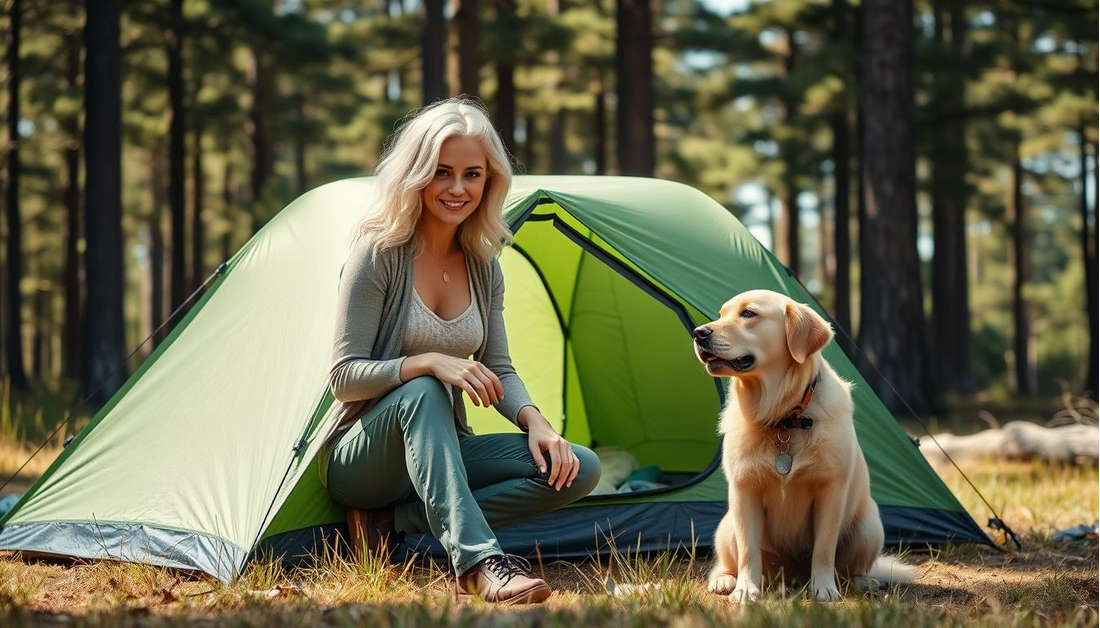
By investing in the right gear, you can ensure a comfortable and enjoyable camping experience for both you and your dog.
Finding Pet-Friendly Campgrounds in the US
The US is home to numerous campgrounds that welcome dogs, making it essential to research their pet policies. Whether you’re planning a quick weekend getaway or an extended camping trip, having your dog by your side can make the experience even more enjoyable.
National Parks That Welcome Dogs
Many national parks across the US allow dogs in certain areas, such as campgrounds and picnic areas, though some restrictions may apply. For instance, Acadia National Park in Maine permits dogs on its campground and in most areas outside of trails and buildings. Similarly, Great Smoky Mountains National Park allows dogs in campgrounds and picnic areas. It’s crucial to check the specific park’s regulations before your visit.
Private Campgrounds with Dog Amenities
Private campgrounds often provide a range of amenities tailored to dogs and their owners. These can include dog parks, pet-sitting services, and dog-washing stations. Yogi Bear’s Jellystone Park is a popular chain that welcomes pets and offers various dog-friendly activities. When selecting a private campground, look for facilities that cater to your dog’s needs.
Understanding Campground Pet Policies
Before heading to a campground, it’s vital to understand their pet policies to avoid any issues. Two key aspects to consider are leash requirements and breed restrictions.
Leash Requirements
Many campgrounds have specific leash rules to ensure the safety of all campers and their pets. Some may require dogs to be on a leash no longer than six feet, while others might have leash-free areas. Always check these requirements in advance.
Breed Restrictions
Some campgrounds may have breed restrictions or size limitations for dogs. For example, certain breeds like Pit Bulls might be prohibited, or there might be weight limits for dogs allowed on the premises. Understanding these restrictions is crucial to planning a successful camping trip with your dog.
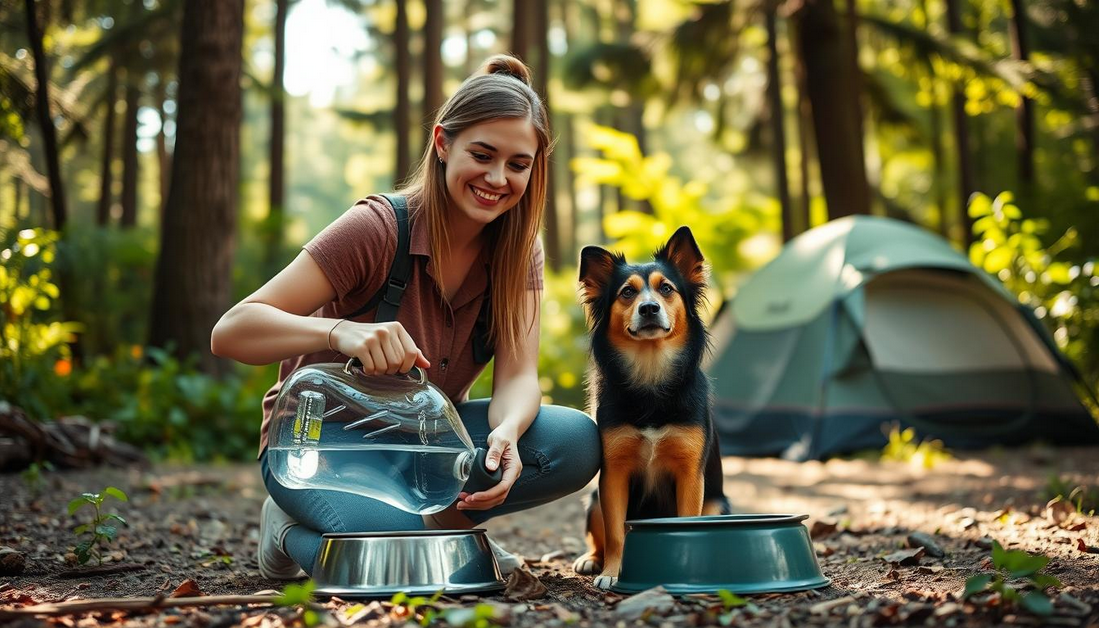
Camping with Dogs: What You Need to Know About Preparation
To make the most of your camping trip with your dog, thorough preparation is crucial, covering everything from health checks to gear familiarization. Ensuring your dog is well-prepared will significantly enhance the camping experience for both you and your pet.
Pre-Trip Veterinary Checkups
A pre-trip veterinary checkup is essential to confirm your dog’s health and readiness for camping. This visit allows for the updating of vaccinations and provides an opportunity to discuss any concerns with your veterinarian.
Updating Identification and Microchips
Before heading out, ensure your dog’s identification and microchip information is up-to-date. This step is vital for ensuring your dog can be safely returned if they become lost during the trip.
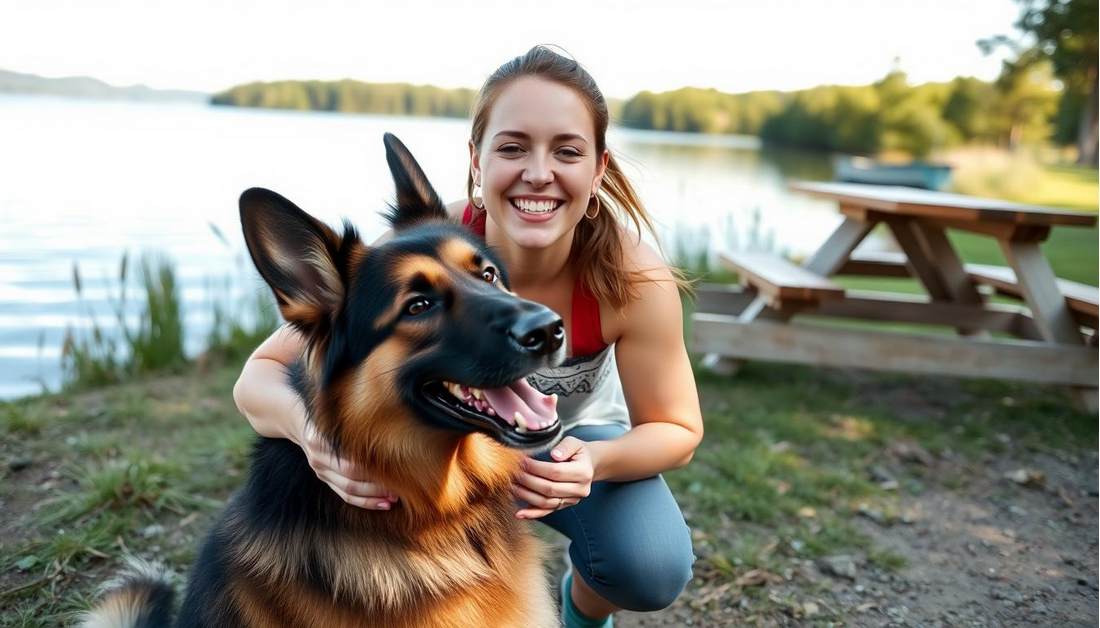
Packing a Pet First-Aid Kit
A pet first-aid kit is a critical component of your camping gear. It should include supplies for treating minor injuries, such as bandages and antiseptic wipes, as well as any medications your dog may need.
As “A well-prepared pet is a happy camper”, it’s crucial to pack the right gear. According to the American Society for the Prevention of Cruelty to Animals (ASPCA), a pet first-aid kit can be a lifesaver in emergency situations.
Acclimating Your Dog to Camping Equipment
Familiarizing your dog with camping equipment, such as tents and sleeping bags, before the trip can reduce stress and anxiety. This acclimation process helps your dog feel more comfortable in the camping environment.
By following these preparation steps, you can ensure a safe and enjoyable camping experience for your dog. As the saying goes,
“Preparation is the key to success.”
This is particularly true when camping with pets, as it allows you to anticipate and mitigate potential risks, ensuring a memorable trip for all.
Setting Up a Dog-Friendly Campsite
When camping with your dog, setting up a safe and comfortable campsite is crucial. This involves several key considerations to ensure your pet’s well-being and happiness.
Creating Safe Boundaries
To keep your dog safe, it’s essential to create boundaries within the campsite. This can be achieved by setting up a designated area for your dog to roam, free from hazards such as toxic plants or sharp objects. Always keep your dog on a leash unless you’re in a designated off-leash area.
Shelter Considerations for Your Dog
Providing adequate shelter for your dog is vital, especially in harsh weather conditions. Consider bringing a portable dog tent or crate to give your dog a cozy place to rest. Ensure it’s well-ventilated and protected from the elements.

Managing Waste Responsibly
Camping with pets means you’ll need to manage their waste responsibly. Bring biodegradable bags to clean up after your dog, and dispose of waste in designated areas. This helps maintain the cleanliness of the campsite and protects local wildlife.
Keeping Food Secure from Wildlife
To avoid attracting wildlife to your campsite, keep your dog’s food and trash secure. Use airtight containers for food storage, and hang trash bags from a tree or a designated post. This practice is crucial for wildlife safety and pet safety.
| Campsite Consideration | Action Required |
|---|---|
| Safe Boundaries | Set up a designated area for your dog |
| Shelter | Bring a portable dog tent or crate |
| Waste Management | Use biodegradable bags for waste disposal |
| Food Security | Store food in airtight containers |
By following these guidelines, you can create a dog-friendly campsite that is both enjoyable and safe for your pet. Remember,
“The journey of a thousand miles begins with a single step.”
– in this case, setting up a comfortable and safe campsite for your dog.
Managing Dog Behavior in the Wilderness
To ensure a pleasant camping trip with your canine companion, it’s essential to understand how to manage their behavior in wilderness settings. Effective management of your dog’s behavior not only enhances your camping experience but also ensures the safety and well-being of both your dog and other campers.
Preventing Excessive Barking
Excessive barking can be a significant issue when camping with dogs, potentially disturbing other campers and wildlife. To prevent this, it’s crucial to train your dog to respond to “quiet” commands and ensure they are not bored or anxious. Keeping your dog occupied with toys or treats can also help minimize barking.
Handling Encounters with Other Campers
When encountering other campers, it’s vital to keep your dog under control. This can be achieved by maintaining a safe distance or keeping your dog on a leash. Training your dog to be calm and friendly around strangers is also beneficial.
Nighttime Routines and Sleeping Arrangements
Establishing a comfortable nighttime routine for your dog can help them settle during the night. Ensuring their sleeping area is quiet, comfortable, and secure is crucial. You may also consider bringing a familiar item from home, like a blanket, to provide reassurance.
Dealing with Anxiety in Unfamiliar Environments
Dogs can experience anxiety in new environments. To mitigate this, gradual exposure to camping environments before the trip can be helpful. Additionally, using calming aids like pheromone diffusers or calming treats can help reduce your dog’s stress levels.
| Behavior Issue | Solution |
|---|---|
| Excessive Barking | Train “quiet” command, keep dog occupied |
| Anxiety | Gradual exposure, calming aids |
| Nighttime Disturbances | Comfortable sleeping area, familiar items |
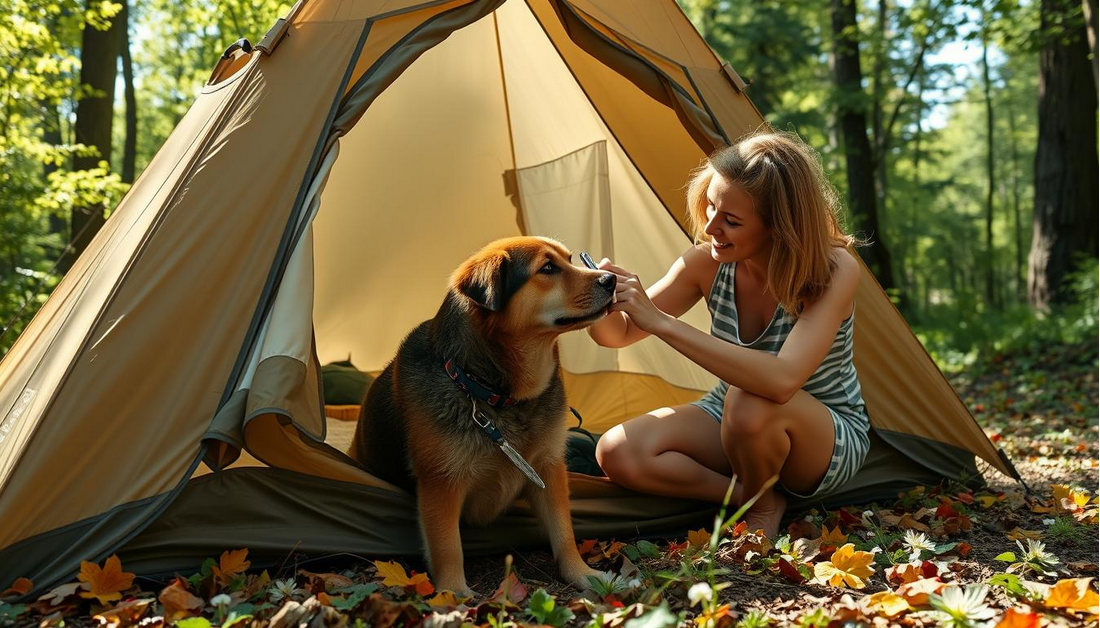
Trail Safety and Emergency Preparedness
When venturing into the wilderness with your canine companion, it’s crucial to prioritize trail safety and be prepared for emergencies. Ensuring your dog’s safety while camping and hiking requires a combination of preparation, knowledge, and the right equipment.
Signs of Fatigue or Distress in Dogs
Recognizing the signs of fatigue or distress in your dog is vital. These can include excessive panting, limping, or changes in behavior. If you notice any of these signs, it’s essential to stop and rest, providing your dog with water and a cool environment.
Handling Common Injuries on the Trail
Common injuries on the trail can range from minor cuts and scrapes to more serious conditions like heatstroke or snake bites. Knowing basic first-aid techniques for pets can make a significant difference in managing these situations effectively.
Emergency Evacuation Plans
Having an emergency evacuation plan in place is crucial. This includes knowing how to carry an injured dog safely and being aware of the nearest emergency vet care facilities.

Carrying an Injured Dog
Carrying an injured dog requires care and the right technique to avoid causing further injury. Using a dog stretcher or a makeshift stretcher can be very helpful.
Finding Emergency Vet Care in Remote Areas
Before heading out, research local veterinary services along your route. Having a list of emergency vet contacts can be invaluable in case of an unexpected situation.
By being prepared and knowing how to handle emergencies, you can ensure a safer and more enjoyable experience for both you and your dog.
Seasonal Considerations for Dog Camping
As you prepare for camping with your dog, understanding the seasonal implications is crucial for a safe and enjoyable experience. Different seasons bring unique challenges that can impact your dog’s health and happiness.
Summer Heat Precautions
During the summer, it’s essential to take precautions to protect your dog from heat-related illnesses. Ensure your dog has access to plenty of fresh water and shade. Avoid strenuous activities during the hottest parts of the day, and consider cooling pads or vests designed for dogs.
Cold Weather Camping with Dogs
In colder weather, dogs need extra care to stay warm and comfortable. Use insulated dog beds and consider a dog coat or sweater to keep them warm. Monitor their paws for signs of cold stress or damage from ice and salt.
Dealing with Insects and Seasonal Hazards
Seasonal hazards like ticks, fleas, and snakes can pose significant risks to your dog. Regularly inspect your dog for ticks and use preventative measures.
Tick and Flea Prevention
Use tick and flea preventatives as recommended by your veterinarian. Regular grooming can also help identify and remove ticks and fleas before they cause harm.
Snake Season Awareness
Be aware of your surroundings, especially in areas known to have snakes. Keep your dog on a leash and avoid tall grass and brush where snakes may hide.
| Season | Hazards | Precautions |
|---|---|---|
| Summer | Heatstroke, dehydration | Provide plenty of water, shade, and avoid strenuous activities during peak heat. |
| Winter | Cold stress, hypothermia | Use insulated dog beds, dog coats, and monitor paw health. |
| Spring/Fall | Ticks, fleas, snakes | Use preventative measures for ticks and fleas, be aware of snake habitats. |
Conclusion: Creating Lasting Memories with Your Four-Legged Camping Buddy
Camping with your dog can be a truly unforgettable experience, allowing you to bond with your pet in the great outdoors. By following the guidelines outlined in this article, you can ensure a safe and enjoyable pet-friendly camping experience for both you and your dog.
As you plan your next outdoor adventure, consider the many benefits of camping with dogs, from strengthening your bond to creating lifelong memories. Whether you’re a seasoned camper or just starting out, camping with pets can be a great way to spend quality time together and enjoy the beauty of nature.
By being mindful of your dog’s needs and taking the necessary precautions, you can create a fun and memorable experience for both you and your furry companion. So pack up your gear, grab your dog’s favorite toys, and get ready for an unforgettable outdoor adventure together, making outdoor adventures with pets a regular part of your routine and creating lasting memories along the way.







